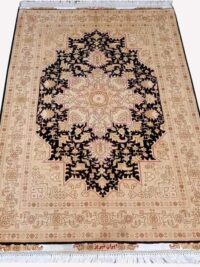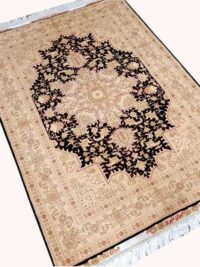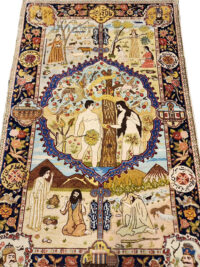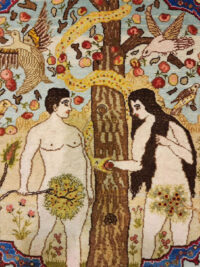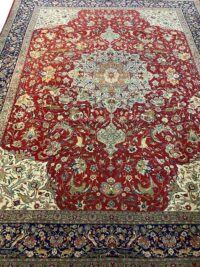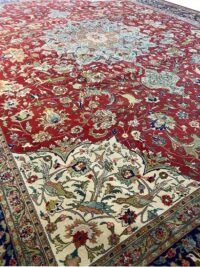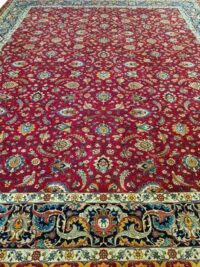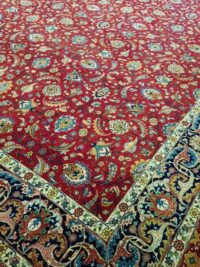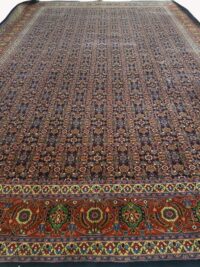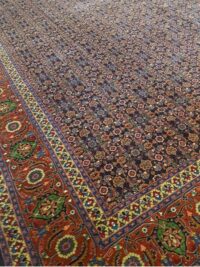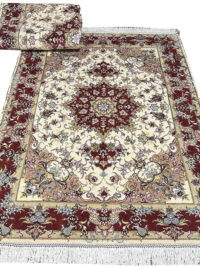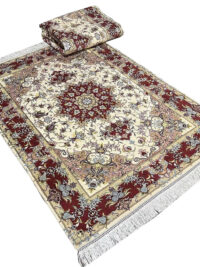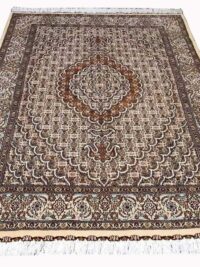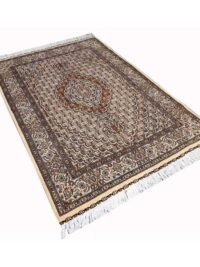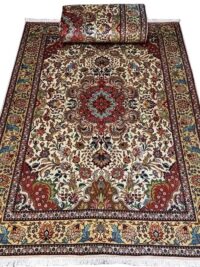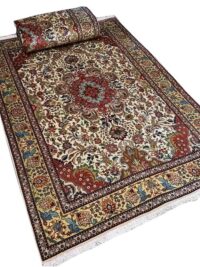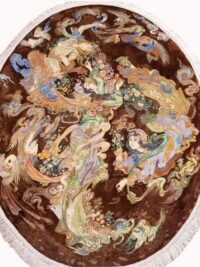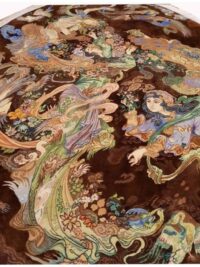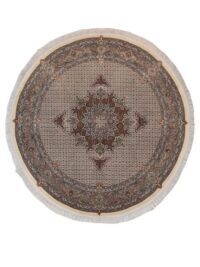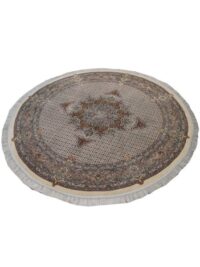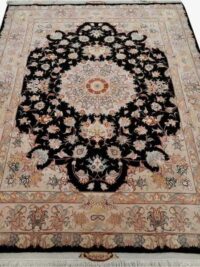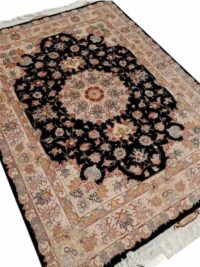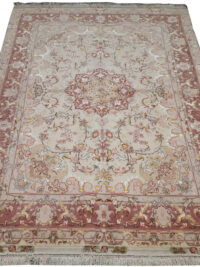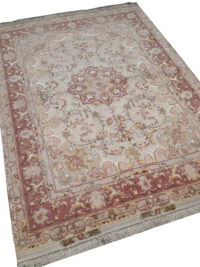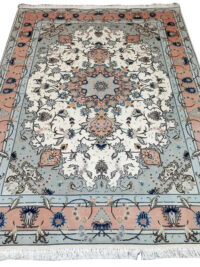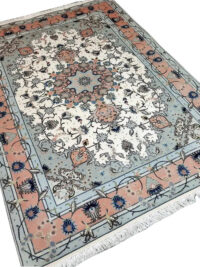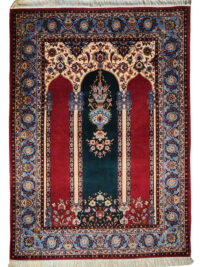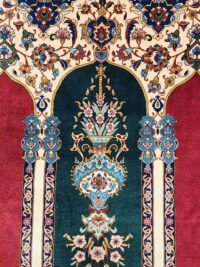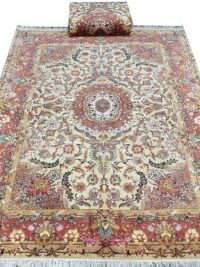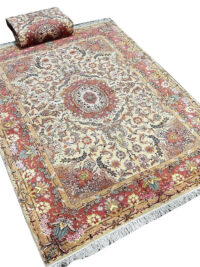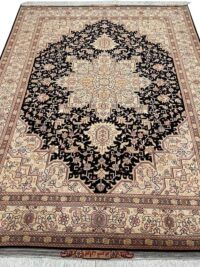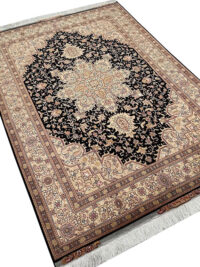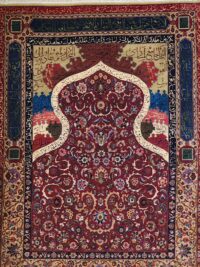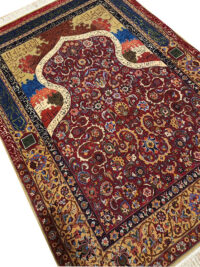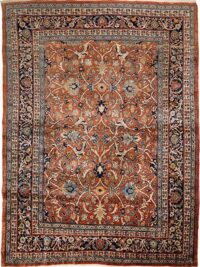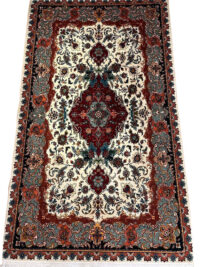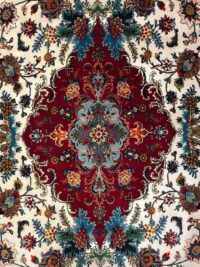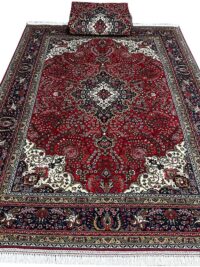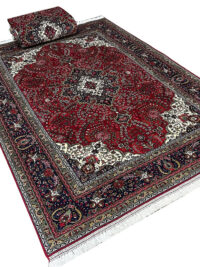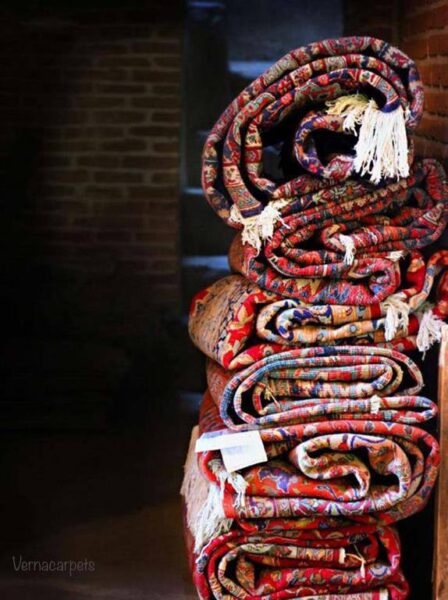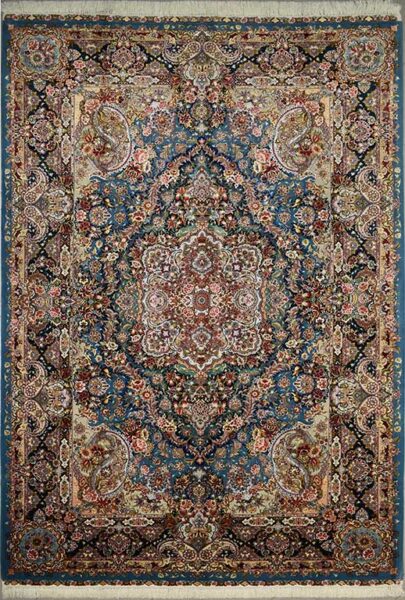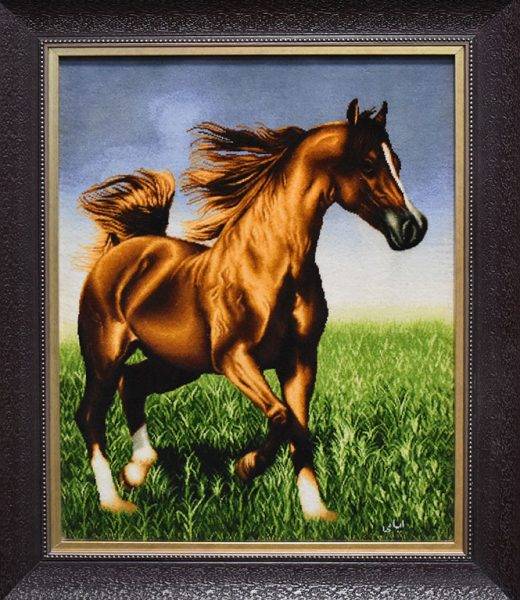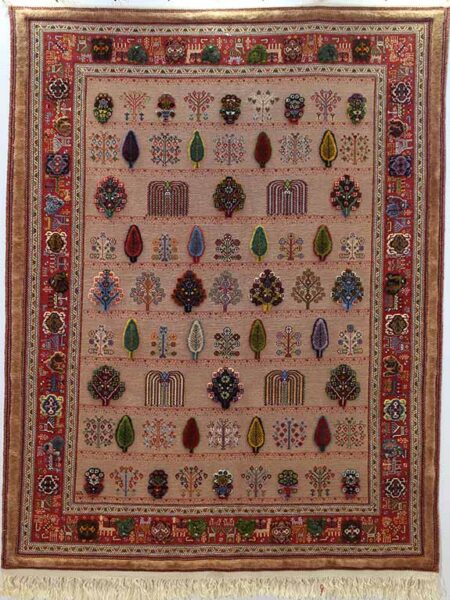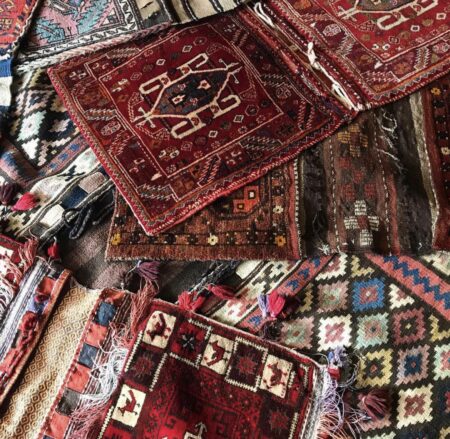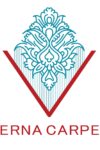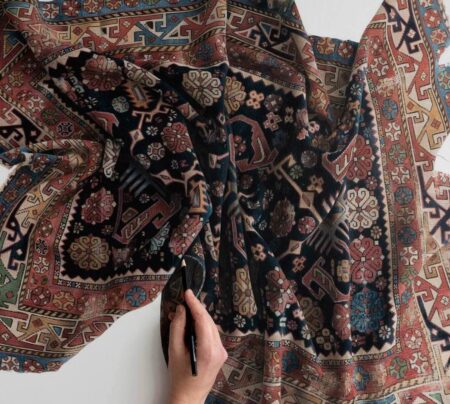
Showing 1–20 of 47 results
History of Tabriz carpet
You may know that the World Handicrafts Council has named the city of Tabriz “The World City of Carpet Weaving”. According to reliable sources, the history of carpet weaving in Tabriz dates back to the third century AD. During this period, Tabriz was considered one of the important centers of carpet and kilim weaving in Iran. However, in the second half of the 15th century and during the Safavid era, when Tabriz was the capital of Iran, Tabriz carpet reached its peak of beauty and glory.
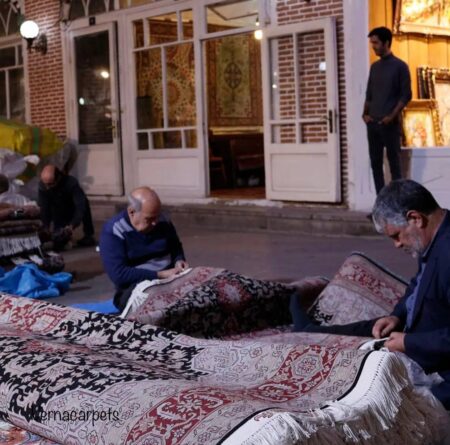
Tabriz carpet market
It was during the Safavid era that the workshops the great carpet weaving industry was created in this city and first class weavers of Iran gathered together and weaved the best examples of Tabriz carpets with their art. In the middle of the Qajar period, Tabriz carpet entered the world markets and the carpet weaving industry in this city grew more. Cecil Edwards, the English author of The persian Carpet, has written about the export of Iran’s carpets and the role of Tabrizian merchants in his book: “The trading of this product was in the hands of Tabrizian merchants who were well-known and wealthy people. Their business also had branches in Istanbul. Their main transactions were buying goods from Western factories and transporting them to Iran through Turkey.”
In the book Rugs and Carpet of the World by Ian Bennett, we come across a theory about Tabriz carpet designs during the Safavid era: A large number of medallion carpets, which were woven in the early years of the 16th century during the reign of Shah Ismail I and Shah-Tahmasab, have Islamic designs and animal and human motifs.
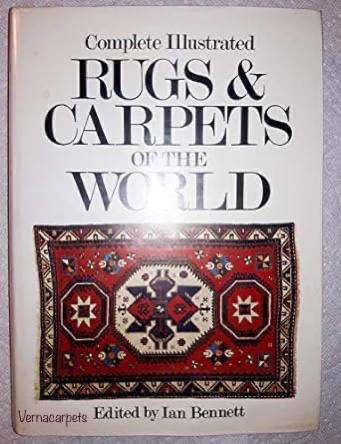
Rugs & Carpets of the world
In this book, the author refers to the carpets that are available in different museums of the world and attributes some of them to the carpets that were woven in the workshops of Tabriz. Among the important examples that are said to have been woven in Tabriz carpet workshops during this period, the following can be mentioned:
- The famous carpet of Ardabil Mosque, which is now kept in the Victoria and Albert Museum in London.
- There is another carpet that is related to this mosque and is taken care of at Maisan Duveen.
- A carpet that belonged to Emperor Charles Quint.
- Two very beautiful carpets in the Poldi Museum in Milan, the first of which dates back to 1522 and has the signature of Ghiyasuddin Jami, and the second belongs to the second half of the 16th century.
What are the characteristics of a Tabriz rug?
- Tabriz carpets have short and regular piles compared to other carpets.
- They are finely woven and are woven with great delicacy.
- The type of knot of Tabriz carpets is Turkish knot and this knot is characteristic of Tabriz carpets.
- High quality wool is used in its texture.
- Tabriz carpets are woven in two wefts and this makes the carpet stronger.
- The Tabriz carpet has a lot of pattern variations.
- The colors used in the texture of Tabriz carpet have many variations and shadows are used in the empty parts of the carpet, which makes the carpet three-dimensional.
Tabriz carpets
The structure of Tabriz carpets
The most important feature of Tabriz carpet texture is its Turkish knot. The Turkish knot or Double-knot weave is special for Tabrizian weavers from the beginning and has been popular in these regions. In this knot, first take the warp below and pass the thread under it, then take the second warp with the hook and pull the thread out with the tip of the hook from between the two warps and bring knot down and cut the thread with the hook and continue the work again.
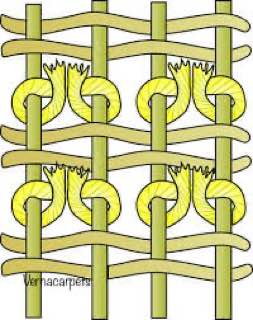
Symmetrical knot
This method takes a lot of time and there is no possibility of cheating. This is the reason why Tabriz carpets are incredibly delicate and strong and cannot be easily shabby. On the other hand, because this knot is very strong, when cutting, the piles of the carpet can be shortened to such an extent that it looks like velvet and its elegance and patterns can be seen more when stepping on it. The density of urban workshops in Tabriz reaches 110 knots in 7cm, but the density of workshops in rural workshops varies between 15 and 25 knots in 7cm. The higher the density of the Tabriz carpet goes, the finer the texture, more attractive the Tabriz carpet becomes.
What materials are used in Tabriz carpet
Most of the wool used in Tabriz carpets comes from the Mako region, which is located in the northwest of Iran. Mako wool is high quality, but it is a bit rougher than other regions of the country. This has caused Tabriz carpets to be a bit rough compared to other carpets like Kerman carpets. Tabriz carpet warp is made of cotton and is very strong. Also, silk is used for weaving flower silk and all silk Tabriz carpets, which is one of the most beautiful carpets in the country. The looms used for carpet weaving in this area are exclusively vertical and you will rarely see the use of horizontal looms.
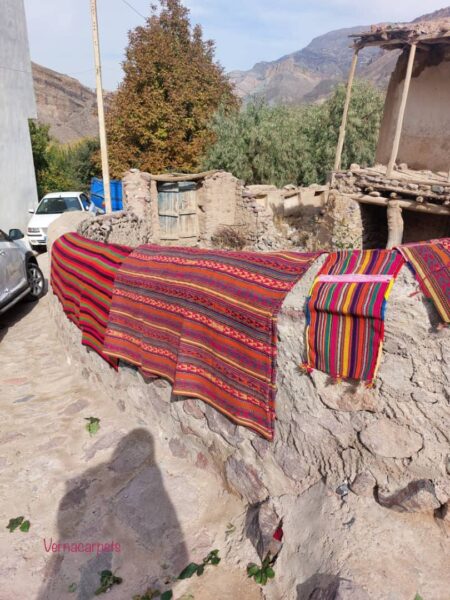
Persian Kilims in villages
Designs of Tabriz Carpet
Some of the most prominent types of Tabriz hand-woven carpet designs are :Fish, Nami, Heriz, Khatibi, Salari, Gonbad, Golestan, Olia,etc.
you can refer to the article Familiarity with Tabriz carpet designs to learn more about these designs.
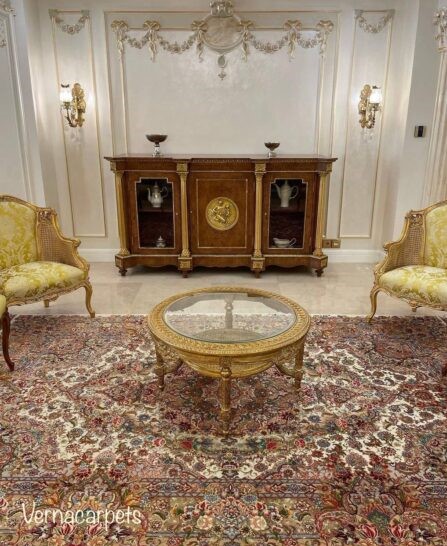
Interior design with Tabriz rug
Order Tabriz rugs online
Persian Tabriz rugs with their beautiful colours and patterns, give each home an oriental atmosphere. These valuable oriental rugs are made from the best wool and are usually refined with silk. The quality of the Tabriz rugs varies and ranges from relatively coarse to very fine works of art. The fineness of the carpets is categorised by the Raj-Number, which shows the number of knots in between 7 cm.
Buy your Tabriz rug conveniently in our Online-Shop. With a Tabriz rug, you get a high quality Persian tradition with a touch of history. You give your home an extra piece of oriental culture. Additionally, with the right care of your Tabriz carpet you are able to get a highly valuable antique rug over the long term.

